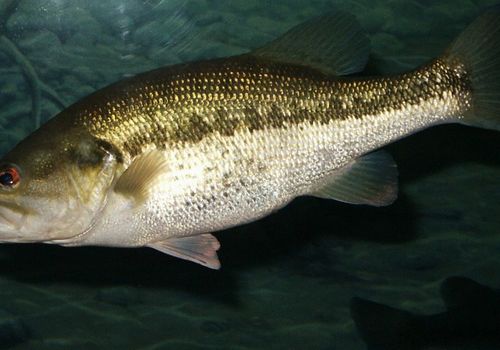
Largemouth bass
Micropterus salmoidesLargemouth bass
Introduction: Largemouth bass (Micropterus samoides) were introduced initially to the Cape from The Netherlands in 1928, an obvious location as they prefer clear, standing or slow-flowing waters with submerged and floating vegetation. This relocation also goes some way to explaining their presence in farm dams and similar habitats, making them an extremely popular and important freshwater game fish species, emphasized by the annual sponsored bass fishing tournaments that occur.
Distribution: Can be found mostly in farm dams in central Namibia. Lake Oanob near Rehoboth is a popular amongst those who enjoy fishing in Namibia and those wishing to overnight are able to use either the campsites or well equipped bungalows
Diet: Mainly fish, but can eat crabs, frogs, snakes and on occasions small mammals. Young bass feed primarily on insects and begin to eat small fish of about 50mm in size.
Colouring: Olive green above, light green on flanks, lower half of head and abdomen white. There is a connected series of short, dark olive green vertical bars forming an irregular band across the body.
Breeding: Breeds in spring (October-November) as water temperatures reach about 18ºC. Parents construct a nest, often over vegetation with the male guarding newly hatched larvae until they reach 25mm in length.
Size: Total length for male and female reaches 600mm with an average weight of ± 5kg.
Klein Windhoek

